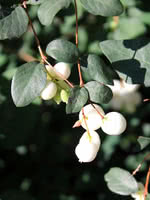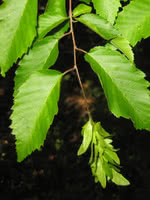Mon-Fri 9am - 5pm Mountain time
Western Snowberry vs Blue Beech
Symphoricarpos occidentalis
Carpinus caroliniana
NOT AVAILABLE THIS SEASON - MIGHT RETURN
NOT AVAILABLE THIS SEASON - MIGHT RETURN
Like the Common Snowberry, the Western Snowberry is a small shrub with pink flowers useful for feeding livestock and preventing erosion. Unlike the common species, however, the Western Snowberry is much more suited to wet conditions, capable of persevering through poor soil drainage and occasional flooding.
After the Snowberry's flowers have bloomed, it produces berries which often last on the plant through winter. These berries are toxic to humans, but livestock and local wildlife love them! Those hoping to attract wildlife to their property can plant Snowberry and expect to see animals foraging on it much later in the year than other plants.
Blue Beech is a beautiful, ornamental tree with enticing features. The foliage transforms throughout the season, offering a kaleidoscope of color. New leaves emerge reddish-purple, transforming to dark green, and then turn striking shades of yellow, orange, and red in fall. Once all the foliage has dropped, grooved, blue-grey bark becomes striking on a winter landscape.
Blue Beech has an attractive globular shape and has been successfully grown in both full shade and full sun locations. Make sure you provide ample moisture to ensure this tree thrives.
Western Snowberry Quick Facts
Blue Beech Quick Facts
Toxicity: berries are toxic to humans

